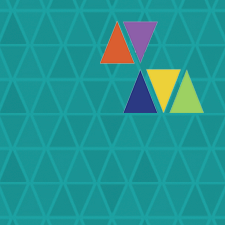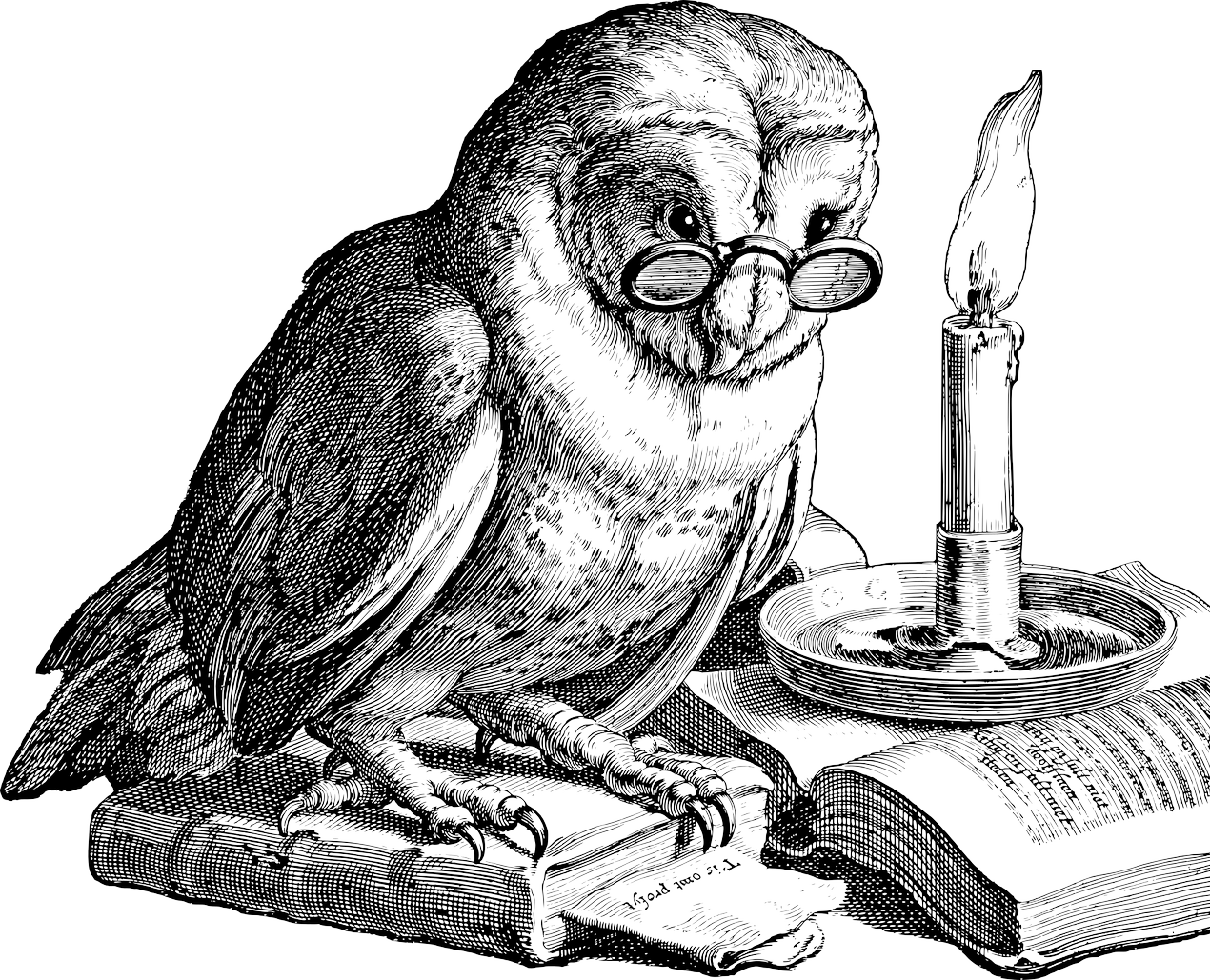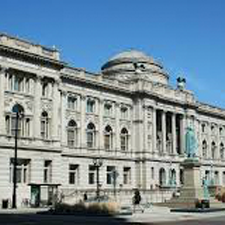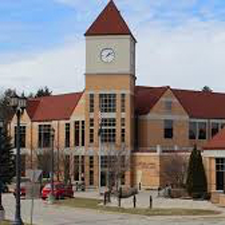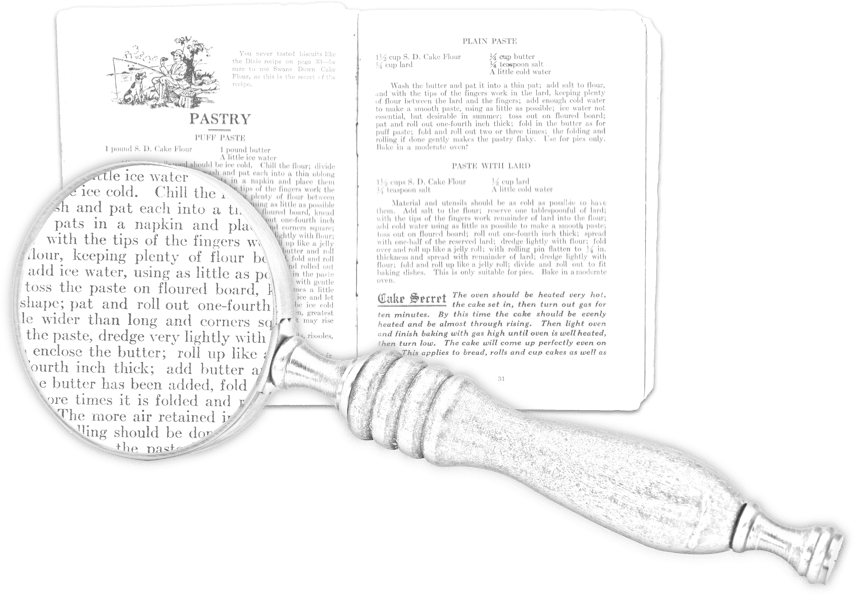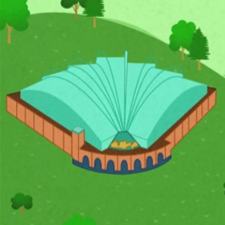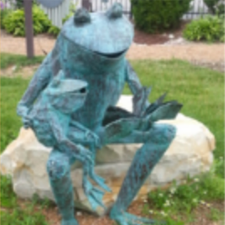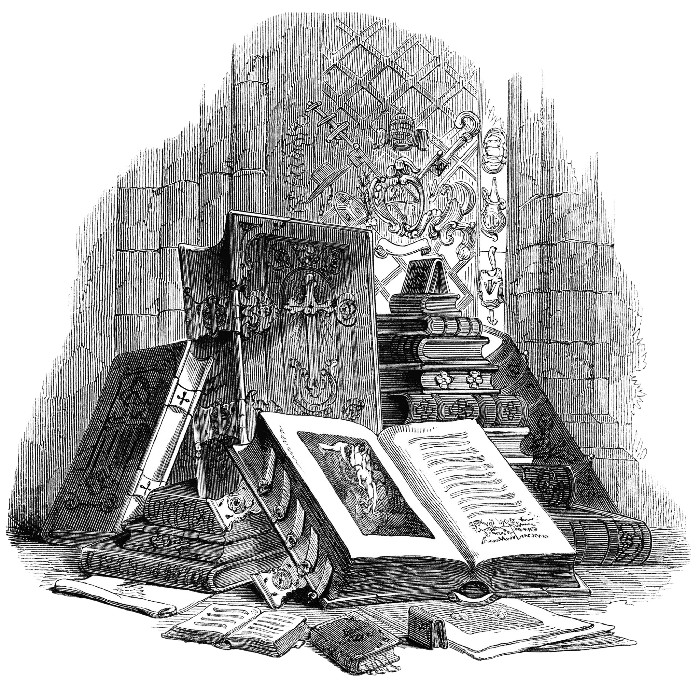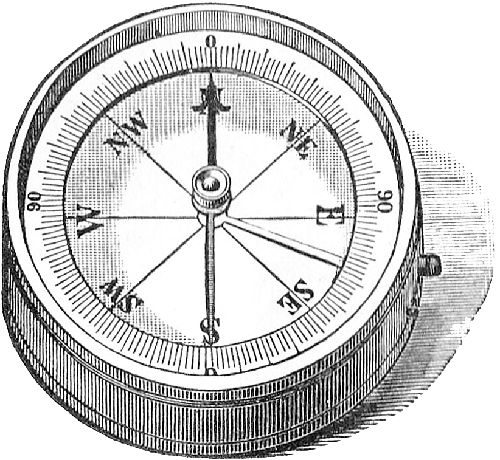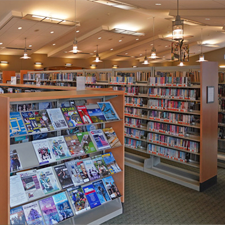-
A Digital Age
-
Experience
-
Content Strategy
-
Search and Discovery
-
Brand
-
Accessibility
-
Library Offerings
-
A Mission-Based Digital Partner
Illustrate the Vibrance and Vitality
of the public library
Uplifting Humanity
Public libraries hold a special place at Byte. We grew up in them and we've seen our own families grow because of them. But we also see many public libraries missing an opportunity for their own growth in an age where digital is de facto. Byte creates digital branches for libraries that show the relevance of the public library. As library web designers, we build experiences around the programs, events and online-only experiences and databases that give a library reach and relevance in a digital age.
The Role of Digital
We feel public libraries in the modern age are already fighting a huge perception issue, the notion that a library is just a bunch of dusty books, and is redundant because of Google. We here at Byte know the modern library well: services, programs, events, curation, a third space, and a fully accessible starting place for everyone where nobody is trying to sell anything.
We're the studio that helps make a library's real work shine to patrons and taxpayers alike. More importantly, we're the kind of studio that asks bigger questions and imagines the role of the public library in a digital age. Questions like:
- How can digital further a library's mission?
- How can digital help a library reach a wider audience?
- How can we further literacy in a loud and messy online world?
- How does can federated search and discovery connect online and offline offerings?
- How can libraries manage the "third space" more effectively?
- How does open data and creative commons licensing fit into a library's mission?
Hands-on Experience
Byte has been building the internet for twenty years, with library and cultural institution websites as a major focus. We've worked deep on the data end of libraries, integrating collections data, creating federated search and discovery systems. We've built in datasets, metadata, taxonomies, and hierarchies in content management systems before Wordpress and Drupal even existed. We are expert-level library website designers.
We've worked for large, medium and small public libraries and created custom tools and interfaces that give us unique insight into what can help a library manage their digital branch and their physical one, with event registrations, room management, and today-in-the-library display monitors. We've created numerous mini-sites for specific audiences or programs, for kids, for teens and for special events.
We've helped each library find a unique voice and toolset to match the needs of their communities and mission.
Between our long term partnerships and a deeper view of data, information architecture and visitor engagement, we’ve created a culture of continuous learning, pushing boundaries and creating data-rich, next-generation interfaces. We’ve focused on iteration over one-time delivery, allowing us and our clients to fine-tune better communication and tooling over time. As a studio, we’re involved in conferences internationally and alliances locally, consistently attending Code4Lib, a conference for the group of brilliant library technologists, and speaking at library and museum conferences about website best practices, including WLA and WPLA.
Issue: Content Strategy For Real Patrons
During our discovery phase, we create and follow an audience segmentation to help find "use cases", things people want to achieve, like finding the hours, seeing kids events, finding a book, etc. We also add in the library's own goals, often showing people new programs, asking them to explore events, etc., along with other external questions like search engines, internal search and other content questions. This helps create a content strategy that informs every other part of the process, including design and build stages, and content needs and creation goals. It also helps us identify would-be issues before building the rest of the site and content.
A few content issues are discovered and solved during this phase:
- The sitemap: It's common a library will come to the process with their own sitemap, which is great and will help stakeholders get involved. However, since we start the content strategy with visitor audiences and use cases in mind, this process usually leads to a very different sitemap than first imagined. We explore multiple sitemap themes that help us all identify the best way to organize and show the library content to people. And we work with the stakeholders to show why certain sitemaps work and what the best options are.
- Librarian language: Librarians, like any group of professionals, have a rich jargon that elevates the profession. There are moments on a website that language can be didactic, but in most cases the use of jargon is something we like to avoid. We'll help identify internal language and other UX and accessibility issues and suggest better ways to communicate.
- Librarian voice: One of the questions we often ask is how much the voice of the librarians themselves should be a part of the website. Some librarians (much like web developers) don't like to be the story, and many librarians may have privacy issues with photos or names on a website. Each library is different, and our content strategy phase helps define how much librarian voice should help animate the content. There are countless ways to solve privacy issues, but more importantly, the conversation about voice itself will help bring everyone to a common voice.
The content strategy phase will determine the success of a website, and ensure a site lasts through the years.
Issue: Helping People Find the Right Content
Librarians get data, and are naturally quite good at websites. The internet itself is built with many of the same methodologies that librarians perfected over the years, from collections databases, metadata, and tags and taxonomies. (See: Tim Berners-Lee.) And the internet has been built with the same high-minded society-raising ideals of openness, accessibility and at the same time privacy. Melvil Dewey and Henriette Avram were the original UX and data usability nerds, and Byte champions UX and data usability in our library websites.
With all this history, library websites should be the pinnacle of information finding and gathering, but it's not uncommon for a library website to miss a strong human connection. A few issues keep coming up:
- Connection with the LIS: There's a good reason to avoid connecting LIS information to a website: privacy. We're well aware of what can never be public, and we only ask for the right kind of data. Understandably, some LIS managers and providers don't want to give any access to the LIS data, requiring people to go to the LIS to search. We see federated (mixed) search as a much better system, so someone looking up "gardening" can know that there are books, videos, classes and blog posts all on the subject. It takes work and trust to help the LIS folks understand that we're on the right side and never want to have permission to access the wrong data, but in the end mixing of data is the answer to make search relevant.
- Search may need discovery tools: Putting one prominent search box presumes people know what they want, and that the search could find it. People don't usually know what they want, and sometimes they don't have any idea, and sometimes they get creative in the spelling. Even if the visitor had the right keyword and spelling, the search itself could just not have the right content for them. Discovery systems mix search and filtering and have starting and middle places for people as they search. And since people are unpredictable, any testing system (automated or by human) will have to account for so many different potential paths. It's hard work, but we're up for the challenge.
- Oversimplistic design: A current website trend is to have less content and to make a site a least-common-denominator of content. A lot of the work of UX is reducing a visitor's cognitive load and making website easy, and the theory from Alvin Toffler's Future Shock is that too many choices confound people. The simplification trend would have us remove choices and meta-information like categories or age groups, but there's definitely more to the story than that. There's an in-between solution that depends on each library's needs, but using advanced design methods we can find a visual hierarchy and employ interactive elements to help people see both a wide angle and be able to zoom into content. While there's a place for simplistic design, we see much more opportunity in mode-based design, letting visitors choose their mode.
We want to find the best way to talk to all the library patrons and website visitors in a language and visual hierarchy that works for them. Every library is different, so we've built our discovery to help us find and solve people's issues before we set foot into a final design.
How much does brand matter for a library?
Historically libraries felt the need to avoid looking corporatized, as libraries are not in the business of selling anything and branding made it seem like the library might be less trusted. We're well past those days. A modern library needs to show its relevance beyond the walls and the books that everyone knows. Since a lot of people assume a library is just an offline Google, the brand is the first indication that a library will have more to offer. A few issues arise:
- What's in a brand, anyway? A brand is much more than a logo, it’s the fonts, pictures, design, messaging and tone wrapped into one cohesive voice with which the library speaks. And online, it will include buttons, navigations, buckets and other interactive elements that need to speak with the same voice. We see a library’s brand as absolutely vital, and our job is to help distill and then expand on that brand in a digital space.
- Should a library keep the same logo or be a sub-brand with its municipality? We see a few sites that do that, but a library is very different than a municipality, and has different needs entirely. The brand of a library should be about transformation and learning and (if necessary) books. Whatever the meaning behind each library is, the brand should follow.
- Should we use a book as logo? We see the future of the library about books and media, sure, but that's 1/2 or 1/3 of what any given library offers now or in the future. It's common these days for a library to not have any media in the logo at all, or to have abstracted versions of media that allows the viewer to take the meaning they want from it. We love transformative logos that mean different things to different people, so if it really needs to be a book, there's a lot of ways to also make it something bigger.
If there isn’t already a cohesive brand, we will work to develop one, or work with an organization's designer to ensure continuity across other collateral. A strong, more cohesive brand is a worthwhile investment and will ensure the library will be seen in the best light.
Issue: Accessibility
It's vital that we make library websites for all people who want to use them. Libraries have an especially wide range of patrons and people who would be patrons if they had access. (When we talk about online accessibility, it's common to use the numeronym "a11y" since it's short. See internationalization, "i17n".) Accessibility has been the base of the web from day one.
A11y isn't something that we can drop in last minute on a website, it's a process phase that requires our full attention during the coding of a website. There are different levels of a11y coding outlined in WCAG specifications, and a myriad of rules that we have to ensure pass. An easy, basic rule is that every image needs alternative text so that a visitor could know what's in the picture if they can't see it. Another easy, basic rule is there needs to be enough contrast between colors so that text and headlines are readable. Every rule gets progressively more detailed and can only be understood as part of a whole system to make sites the most usable to the most people.
The dark side of a11y is that in many ways it's never done, and there's not one-stop place that will check compliance of every rule. There's plenty of tools that will check a site's alternative text, text contrast and other basic compliance, but too many of the rules are contextual and only human testing ensure the site passes. And the WCAG rules change over time, and browsers do, too, so even if a site passes validation now, it might not in a year or two. A11y is a learning process for everyone, and very large companies with large staffs of a11y folks are still learning new ways to make sites better, so even at the best case, the work will never be 100%.
And because a11y is so much work, it's common to see a11y plugins that overlay a page that are sold to "solve" a11y. They don't. While a plugin could to basic efforts like changing colors to be high-contrast, or adding a dark mode to a site, these are all done programmatically and not by a designer who would also match brand, say. More importantly, a plugin isn't going to solve big picture issues like keyboard or screen reader navigation and WAI-ARIA tags that make sense.
One of the best parts of a11y coding is that the site works better for search engines and bots that help a site be seen or indexed properly. Even the alternative text is understood as valuable to a search engine, including as "knowledge graph" information that shows up as a sidebar or above the search results on Google, or as an answer for Siri, Alexa or OK Google. Happy accident, but worth the mention.
Surprisingly Affordable Solutions
Despite being fully custom, Byte is considered one of the best values in nonprofit website and application development. We are comparable or less than any dedicated web design firm and about ½ to ⅓ the cost of any advertising agency.
Library Offerings
- Book lists recommendations
- Integrated / federated catalog and website content searches
- Event calendars, registration and registration reminders
- Room reservations and management
- Blog and themed blogs
- Kids, teens and other user-based pages and sites
- Special exhibition and event mini-sites
- Online and on-site emergency messaging, announcements
- Digital in-library displays for wayfinding, events and promotions
- Kiosks and interactive touchscreens
A Mission-based Digital Partner
Technology has given libraries a new set of tools to increase reach into their communities and share their collections and insight across the world. As library web designers and developers, we've focused on building tools for libraries to extend their reach online.
Like us, libraries are never finished learning, trying new ideas, technologies and paths. We start every project by digging deep and understanding all we can about a library, the audiences, the collections, the mission and the communities. Librarians have always been a source of ideas and inspiration for the tools and interfaces we build.
Brand plays a vital role in how people understand and interact with an institution today, and it’s much more than just a logo, font & color palette. A brand is the organization’s voice, and it’s important that that voice translates to the digital realm just as well as it does to print, signage, kiosks and other collateral. We can work with a current brand, give it life online and on touchscreen. And we can create an informed, smart brand that reaches a wider audience.
We specialize in building meaningful connections between users & data, and a big part of that is search. The discoveries we’ve made from tracking sterilized versions of search terms are invaluable, we can learn better what people expect from a site, the words people use to describe their search, and what confusions or misconceptions arise.
We believe in power an iterative process. From small updates to full site redesigns, websites are meant to grow and evolve over time. We don’t want this evolution to be arbitrary -- we want to learn, iterate and learn again whenever possible, and learn from analytics or other usage data.
Most importantly, as a specialized library web designer rooted in relationships, we are fully invested in the evolution and success of the public library.
Let's Talk


